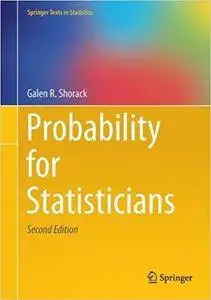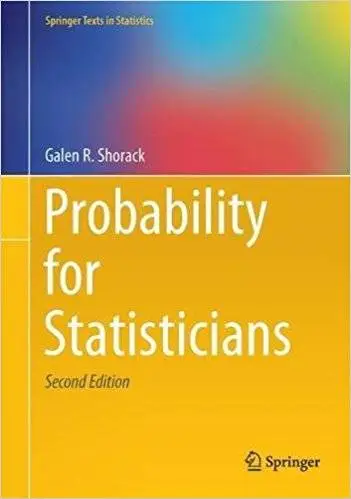Probability for Statisticians (Springer Texts in Statistics) by Galen R. Shorack
English | 2017 | ISBN: 331952206X | 534 Pages | PDF | 4.79 MB
English | 2017 | ISBN: 331952206X | 534 Pages | PDF | 4.79 MB
This 2nd edition textbook offers a rigorous introduction to measure theoretic probability with particular attention to topics of interest to mathematical statisticians―a textbook for courses in probability for students in mathematical statistics. It is recommended to anyone interested in the probability underlying modern statistics, providing a solid grounding in the probabilistic tools and techniques necessary to do theoretical research in statistics. For the teaching of probability theory to post graduate statistics students, this is one of the most attractive books available.
Of particular interest is a presentation of the major central limit theorems via Stein's method either prior to or alternative to a characteristic function presentation. Additionally, there is considerable emphasis placed on the quantile function as well as the distribution function. The bootstrap and trimming are both presented. Martingale coverage includes coverage of censored data martingales. The text includes measure theoretic preliminaries, from which the authors own course typically includes selected coverage.
This is a heavily reworked and considerably shortened version of the first edition of this textbook. "Extra" and background material has been either removed or moved to the appendices and important rearrangement of chapters has taken place to facilitate this book's intended use as a textbook.
New to this edition:
Still up front and central in the book, Chapters 1-5 provide the "measure theory" necessary for the rest of the textbook and Chapters 6-7 adapt that measure-theoretic background to the special needs of probability theory
Develops both mathematical tools and specialized probabilistic tools
Chapters organized by number of lectures to cover requisite topics, optional lectures, and self-study
Exercises interspersed within the text
Guidance provided to instructors to help in choosing topics of emphasis



